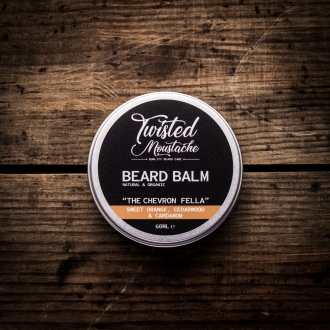What Causes Facial Sensitivity and How to Deal With It
By Jack Shaw (Guest Post) | Last updated 23rd September 2024
Facial sensitivity causes discomfort and affects your ability to care for yourself. It renders personal grooming a chore, which should be a therapeutic activity. Discover why you experience strange sensations around your face and what to do about them.
What Causes Facial Sensitivity?
Facial sensitivity usually stems from skin sensitivity. Although the skin is one large organ, the section covering the face is unique from the rest of the body.
Overly sensitive skin is often a symptom of a medical condition, not a disease. The good news is that the health conditions causing skin sensitivity are rarely life-threatening. The bad news is that the culprit can be challenging to identify since it can be any of the following.
Dry Skin
Skin dryness occurs when the skin has inadequate lipids. These fatty compounds keep the skin moist, elastic and youthful. Lacking these oils results in flakiness, itchiness, redness and sensitivity. Although dry skin generally develops on limbs, hands and feet, it can also occur on the face.
Dehydrated Skin
Skin dehydration is self-explanatory. However, when something compromises the epidermis — the skin’s outermost layer — drinking plenty of fluids may not make a world of difference.
One of the jobs of the stratum corneum — the top layer of the epidermis — is to hold water, keeping your skin hydrated. It underperforms when a health condition, like boils, acne or melanoma, impairs it. Epidermal water loss can cause the skin to become painful to the touch.
Dehydrated skin can also release excessive pro-inflammatory cytokines — proteins that tell the immune system to increase swelling. Such abnormal secretions can result in weird sensations in the affected areas, including the face.
Eczema
Atopic dermatitis jeopardises your skin’s ability to shield you from irritants. As a result, you become more sensitive to microorganisms and substances in the environment that don’t bother others.
Eczema is treatable but not curable. This chronic condition can come and return without warning, making it challenging to manage.
Contact Dermatitis
This condition occurs when your skin cannot tolerate a new substance. It can be irritant or allergic.
Irritant contact dermatitis manifests as an itchy rash that appears after exposure to a chemical. You’re more likely to experience this when trying a new product, like a soap, facial wash or shaving gel.
Allergic contact dermatitis, on the other hand, doesn’t happen immediately. Instead, it requires at least two exposures. The first makes you sensitive to the antigen — a substance that compels your immune system to produce antibodies against it. The second one is the allergic reaction in the form of skin redness or itchiness.
The two phases of allergic contact dermatitis can happen in a day or two. Additional exposures trigger more rapid reactions.
Urticaria
Urticaria is the term the medical community uses when referring to hives — itchy welts. Sometimes, angioedema, swelling underneath the skin, accompanies it.
Hives can appear after direct contact with an irritant. You can experience urticaria after wearing a new perfume or applying cacao powder, avocado or other raw foods as part of your experimental skin care regimen.
Exposure to physical stimuli, including heat, cold, ultraviolet (UV) light, pressure, friction or vibration, may also cause these welts. You may notice them after basking in the sun to get vitamin D or giving new gym equipment a whirl.
This condition doesn’t always have an obvious cause and can chronically come out of nowhere. Although the rash may run its course quickly, acute cases can last for weeks.
Hypersensitive Facial Skin

This skin condition can be puzzling because it has no visible signs, but you’d know when you have it since it’s extremely uncomfortable. Although your face may look normal on the surface, experiencing these three symptoms often indicates hypersensitivity:
- Heightened susceptibility to irritation due to an impaired skin barrier.
- Hyperreactive epidermal sensory fibres and inflammation-induced redness.
- The so-called hypersensitive skin triangle can trigger tightness and an unpleasant burning or stinging sensation upon exposure to environmental irritants.
A secondary symptom may include facial skin dehydration because of transepidermal water loss, resulting in a dry-looking complexion.
Rosacea
This facial skin disease can give you a sunburnt look, with tiny bumps, pimples and apparent blood vessels. It also triggers immediate burning or stinging sensations. If you notice blushing or flushing after putting on a cosmetic product like sunscreen with adequate protection or pomade, drinking a hot dandelion or chamomile tea for skin care or washing your face with very hot water.
While anyone can develop rosacea, you’ll be at higher risk of it if it runs in your family and you have a history of smoking, are over 30 but under 50 years old and are highly prone to sunburn.
Aquagenic Pruritus
This condition can cause your skin to become mildly or intensely itchy when it touches water. You may also feel severe burning, tingling or stinging. It doesn’t cause rashes, blisters and any other visible symptoms.
The medical community doesn’t know how often it occurs, so it’s incredibly rare. Although it occurs as a symptom of another condition or a side effect of a medication, it’s not unheard of for it to occur on its own.
Nevertheless, aquagenic pruritus can be genetic. However, health-care professionals haven’t identified the specific gene causing this to persist across generations in a family.
Photosensitivity
Photosensitivity is a group of skin disorders in which the skin reacts strangely after exposure to visible light or UV radiation from the sun or a tanning bed. The reaction can be phototoxic or photoallergic — the former is more common.
Phototoxic reactions happen when a drug you orally or topically take damages your skin after being activated by UV rays. They can feel like a rash or sunburn. The reaction appears in the exposed skin area within minutes or hours after exposure.
Photoallergic reactions occur when sunlight interacts with the ingredients in your medication or skin care product. Your immune system detects these interactions, considers them a threat and produces antibodies to neutralise them. This chain of events can lead to rashes, red bumps, blisters and oozing lesions within after applying the medication or cosmetics and exposure to UV light.
You can suddenly become photosensitive for various reasons. You may develop this condition from antibiotics, antihistamines, heart medicines, statins, nonsteroidal anti-inflammatory drugs and other medications. Medical researchers have also discovered that some health conditions like lupus can make you hypersensitive to sunlight.
Moreover, beauty products with ingredients that reduce your skin’s melanin and affect its topmost layer can compromise your natural defences against the sun’s harmful rays. They render UV radiation more detrimental to your health — especially during cold months when the gap between Earth and the sun is at its narrowest — and increase your proneness to photosensitivity.
Allodynia
Allodynia is a type of nerve pain that causes skin to become overly sensitive to tactile and thermal stimuli. This condition makes simple activities such as changing clothes, gently shaking hands and going from hot to cold environments hurtful. It’s akin to a terrible sunburn, triggering sharp, burning or stinging sensations.
Medical experts attribute allodynia to a nervous system error. It can be a symptom of a separate health condition. Migraines, diabetes and shingles are the usual suspects. Its duration varies from person to person and can last indefinitely.
Thin Skin
The face has the thinnest skin, so it’s naturally more sensitive than many parts of the body. That’s why the stretch of skin from the neck to the scalp is considered one of the most difficult places to get tattooed. The area has a significant concentration of nerve endings, making it more prone to pain.
How to Deal With Facial Sensitivity

Facial sensitivity is a major hindrance to grooming, so follow these tips to practise self-care painlessly despite your sensitive skin.
Take Lukewarm Showers
Lukewarm bath water may be more beneficial to your reactive skin. Warm baths may be soothing, help balance your skin’s natural oil levels and keep your face moisturised. However, they may still be too hot for your sensitive skin.
Showering with lukewarm water can ease swelling and help alleviate irritation. Bathing for too long can dry your skin, so spend no more than 10 minutes in the bathroom to keep your face moist and healthy. Although you don’t have to bathe daily, you should wash your face frequently if you have breakouts to calm them.
Use Gentle Personal Care Products
Cosmetics with harsh chemicals can cause sensitive skin irritation. As a general rule, steer clear of grooming aids with fragrances, dyes and alcohols, as they cause more problems than they solve. Seek products made with organic ingredients to avoid exposing your face to irritants.
Fortunately, personal care brands offer milder product varieties for sensitive skin. Read the label to ensure the soap, shampoo, conditioner and hand and body lotion in your shopping cart are gentle on your skin.
When using a product for the first time, try it on a small portion of your body first to see how your skin reacts and determine whether it’s for you.
Learn to Shave Properly

Every man with facial hair and sensitive skin who prefers shaving wet must invest in a proper grooming kit. It should include a cleanser to keep your face clean, a shaving gel for lathering with more lubrication than foam and an alcohol-free aftershave balm to hydrate your skin.
When shaving, use warm water to wet and soften your facial hair. After a few minutes, go with the grain or hair growth with light, gentle strokes to minimise contact with your skin. Go against the grain only when you want a closer shave. At the end of your ritual, pat your face dry with a clean towel instead of rubbing it to avoid irritation.
If you grow thick facial hair and rarely shave wet, use a beard oil with argan oil to keep the skin underneath moisturised and healthy.
Switch to Natural and Eco-Friendly Cleaning Supplies
Stock up on green products to clean and disinfect your space without inadvertently spreading harmful substances inside the house. Ordinary cleaners may contain ammonia, bleach, chlorine and a host of unsafe chemicals that may irritate your sensitive skin and endanger your overall health.
Eco-friendly all-purpose cleaners, stain removers, detergents and dishwashing liquids favour plant-based ingredients and essential oils. Although some may contain synthetic components, passing stringent toxicity tests and securing reputable third-party certifications indicate safety.
Consult a Primary Care Provider
Some causes of facial sensitivity require medical treatment. If your intolerant facial skin hasn’t improved after taking lukewarm baths, using mild personal care products, shaving properly and transitioning to eco-friendly cleaners, schedule a medical checkup to determine the cause.
Primary care providers can handle most skin problems, so you can consult one for diagnosis and get an appropriate prescription. A primary care provider will refer you to a dermatologist when your condition merits a specialist’s opinion.
Keep Facial Sensitivity From Becoming an Obstacle to Personal Grooming
Letting your intolerant skin stop you from practising proper self-care compounds facial sensitivity’s impact on your well-being. Address the root cause of your sensitive skin and make wiser lifestyle choices to feel and look better.
Jack Shaw is a writer, editor and grooming enthusiast. His explorations of men’s health, fitness and fashion can all be found on Modded, a men’s lifestyle publication on which he serves as the senior writer. Reach out to him via LinkedIn.






